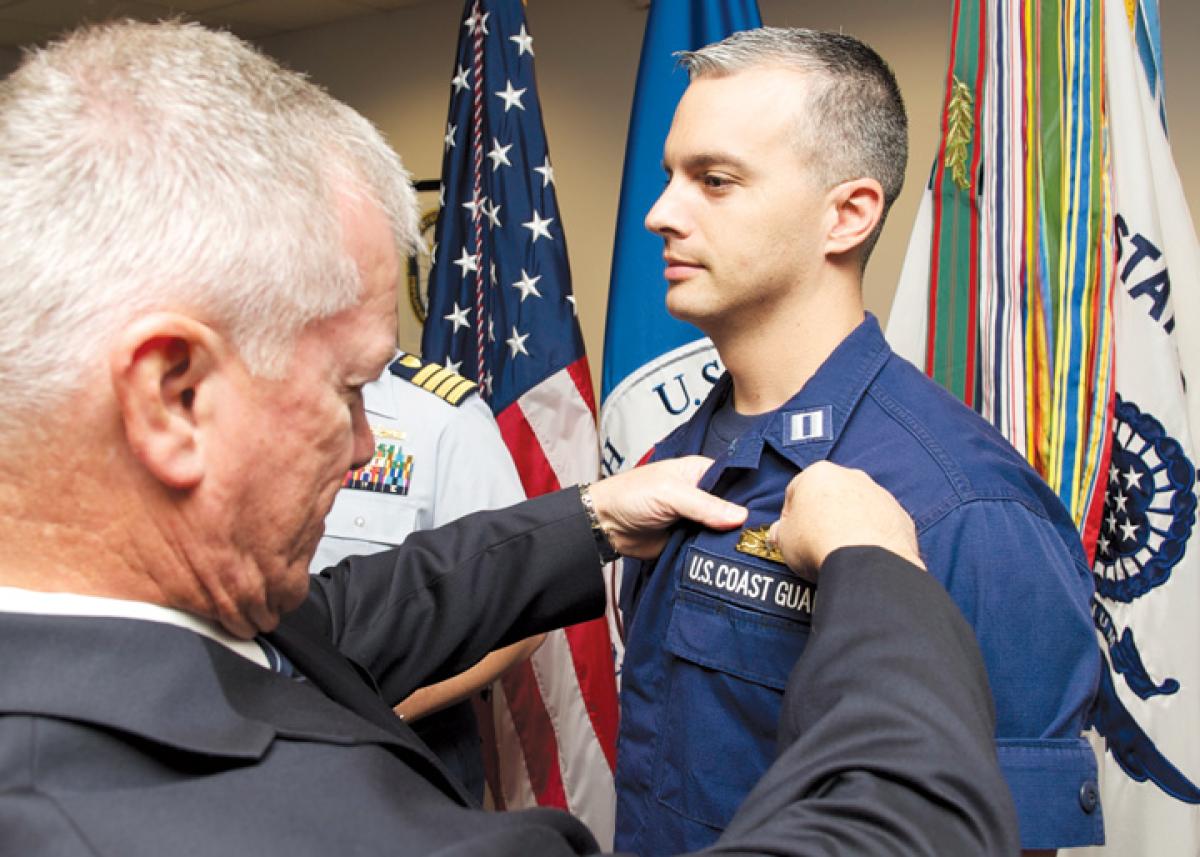The Coast Guard should eliminate the daily wearing of uniform specialty insignia. Yes, I’m saying we should stop wearing our aviator wings, cutterman pins, boat force operations pins, coxswain pins, marine safety pins, and the like on the operational dress uniform. Wearing these specialty insignia is not mandated per se, but there’s no denying the powerful emotions and bias connected with them and people’s desire to advertise their expertise.
To be clear, I’m not suggesting we do away with insignia altogether. The process of earning them serves many useful purposes, the least important of which is recognizing individuals. The standard knowledge, training, and experience required to earn them uphold the Commandant’s vision to “honor our profession” and advance proficiency. Yet I can’t help thinking that their absence from our day-to-day uniform could serve as an important visual reminder that we’re an all-missions service, a team of Coast Guardsmen first and foremost.
As a wise sea captain once remarked to me about the military tendency to size people up based on their ribbon bars and specialty insignia, “We’re like dogs. The first thing we do when we meet other military members is start sniffing them out.” But ribbons don’t necessarily denote a person’s background or experience, and Coast Guard uniform regulations allow insignia to be worn only on the operational dress uniform. This makes the pins the most visible means by which we evaluate people, which is counterproductive because it divides us along lines of organizational subcultures.
Culture is the most influential element of any organization, and, like most large ones, the Coast Guard has differing cultures among various subgroups. Each community has its own values and traditions that, in turn, affect people’s beliefs and behavior. To some degree that is unavoidable, but we advertise and reinforce those differences with our specialty insignia. For many Coast Guardsmen, they become the focal point when interacting with others. People are stereotyped, categorized, and judged based only on the pin they’re wearing.
There’s the rub. Increasingly the Coast Guard is becoming dependent on intra-service cooperation and coordination. This is driven largely by the extensive reorganization of operational field commands, since 2004, into Sectors. People from our service’s most distinct historical groups (Operations and Marine Safety; today they are wrapped into Response and Prevention) now work side by side in joint fashion. We’re also challenged with performing 11 statutory missions in a hypersensitive, media-driven era. In short, we can’t afford to fail.
This translates to people and units from all service backgrounds operating in new or unknown territory, under the all-missions concept. For example, in the Puget Sound region, operational units (crews on board cutters, boats, and aircraft) frequently team with incident-management and marine-safety professionals in response to oil-pollution cases and marine casualties. These missions arise nearly as frequently as more traditional ones such as law enforcement and search and rescue.
At operational field commands, these factors combine to make unity of effort essential. But achieving it is not accomplished simply by reorganizing our structure. We need to focus on and promote cultural change as well. In his article “Doctrine Is Not Enough: The Effect of Doctrine on the Behavior of Armies,” Paul Johnston highlights the power of culture, concluding that “those who would attempt to modify an army’s behavior need to think beyond doctrine manuals.” He notes psychologists’ belief that “to actually change someone’s mind requires an emotional experience” (Parameters, autumn 2000, 30–39).
Therein lies our opportunity to take a symbolic step toward greater unity and a singular culture. The emotional attachment to specialty insignia is undeniable—they imbue pride by lending credibility to individuals and unifying different communities—but they create unnecessary barriers and limit our collective success when people make judgments and form opinions of others based on a pin. In today’s operating environment, success depends on the ability to break down those barriers.
So why not remove our specialty insignia from day-to-day uniforms? They are so symbolic nowadays that not wearing them might actually be more meaningful. Let’s not advertise our differences, but rather embrace the fact that we’re an all-missions service, made up of Coast Guardsmen working as one team to serve the country.



